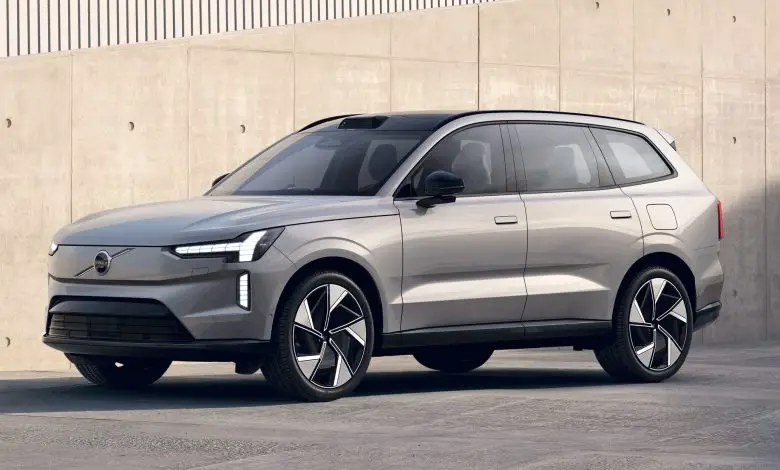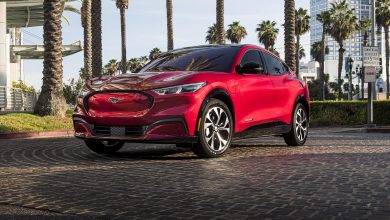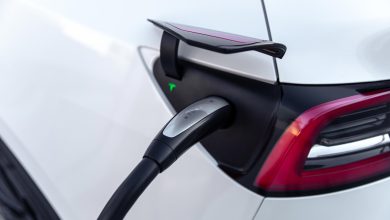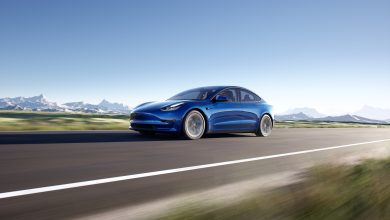2024 Volvo’s EX90 SUV Is The Flagship That Redefines The Electric Vehicle Industry
EV News300 miles of range and coming in over $80,000

Volvo has unveiled its 2024 flagship electric vehicle called the EX90. Leading up to Wednesday 9 November 2022, Volvo has been giving fans crumbs of its flagship electric vehicle. Now unveiled, the seven-seater luxury SUV boasts a slew of futuristic attributes including in-car sensors to detect when the driver is intoxicated or distracted, bidirectional charging, and long-range lidar.
It gets better with the infotainment system that has a host of high-powered tech from Nvidia, Luminar, Qualcomm, Google, and more. The new EV was unveiled in Sweden and will go on sale in early 2024. Available information estimates that it will have a starting price under $80,000 when it comes to the United States.
Earlier, Volvo said it will only sell EVs from 2026. Explaining the power of the EX90, Volvo CEO, Jim Rowan said, “The Volvo EX90 is a statement that defines where we are and where we are going.
The fully-electric car has a range of about 300 miles on a single charge. It has raised safety standards and is the first Volvo car with extensive software. The Volvo EX90 is the beginning of a new chapter for Volvo Cars in myriads of ways.”
In terms of EV architecture, the EX90 will be built on the Scalable Product Architecture (SPA2) electric vehicle architecture which is the same platform that will be used for the upcoming Polestar 3 SUV (Jointly owned by Volvo and its parent company Geely) that will be built in the company’s Charleston, South Carolina facility. Therefore, it is not surprising that the EX90 and Polestar 3 have slightly similar specs.
First look at the numbers of Volvo’s EX90
C40 Recharge and XC40 Recharge are two previous EVs built by Volvo. Unlike the EX90, the two previous models were built on the Compact Modular Architecture (CMA) developed by Volvo and Geely. The SPA2 platform allows the inclusion of more powerful motors, bigger batteries, and other fascinating upgrades like bidirectional and fast charging.
At the heart of the Volvo EX90 is a 111 kWh battery pack (with a usable capacity of 107.0 kWh). It also comes with a pair of electric motors affixed to each axle. Together, the electric motors have a combined output of 496 hp (370 kW) and 671 pound-feet (910 Nm) of torque. On a single charge, the battery can push the car through up to 300 miles (483 km).
Volvo said that it has equipped the new EV with a fast-charge technology that can charge the car from 10% to 80% in under 30 minutes. The bidirectional charging capabilities allow users to power their homes or charge different electronic devices using the car’s battery. Users can also choose to sell energy from the car back to the power grid.
Expanding the frontier on safety
Above the windshield, Volvo has fitted the new SUV with lidar from Luminar with a range of 250 meters. This powerful sensor can detect car tires 120 meters ahead on a black road while at highway speed.
Perhaps, the company may eventually endow the new EV with autonomous driving software. However, for now, the lidar integrates into the EVs advanced safety systems to detect objects on the car’s path.
Apart from the lidar mounted above the windshield, the EX90 has an extensive array of cameras and sensors that includes 16 ultrasonic sensors, 5 radars, and 8 cameras. This gives the vehicle a 360-degree view of its surrounding.
A combination of two cameras inside the vehicle and a steering sensor actively monitors the driver’s eye behavior to determine if the driver is distracted or impaired. If the driver is distracted, the vehicle will issue a series of warnings intended to draw the driver’s focus back to the road.
If the driver fails to respond to the warnings, the car will start slowing down and come to a halt by the side of the road after which the hazard lights will be activated. Volvo is one of the few automakers to include lidar technology. The company says it is crucial for eliminating traffic fatalities.
The in-car radar also has the ability to detect the presence of a child or pet in the vehicle. When a child or pet is detected, the system can prevent you from locking the doors, display a reminder, or turn on the climate control system that maintains a comfortable temperature for the child or pet.
Volvo EX90 will launch with the advanced driver-assist system (ADAS) called Ride Pilot that now includes the ability to change lanes which is an upgrade from the previous lane-centering capability. According to officials at the company, when using Ride Pilot, the driver is not required to watch the road. Until it is approved by state regulators, the feature will be subscription-based in California.
It is not surprising that the company is advertising the EX90 as “the safest car it has ever made”.
EX90 mimics XC90 Recharge in design
Although the EX90 is in a class of its own, it borrows some features from the XC90 like having an identical wheelbase of 117.5 inches. However, it is about three inches longer at 198.3 inches. It is also a bit wider and lower at 77.3 inches and 68.8 inches respectively.
Volvo claims that the EX90 has a drag coefficient of 0.29. They said they were able to achieve this using a rounded front end rather than grilles. The entire car sits on 22-inch wheels that come with distinct wheel-cover inserts that enhance smooth airflow.
While the EX90 has its peculiarities, it doesn’t deviate completely from Volvo’s signature exterior designs. According to Volvo’s global head of design, Robin Page, the decision to keep things simple is intentional. However, Page also hinted that in the future they “can be more playful”.
The EX90 comes with a panoramic roof that lets in natural light to brighten your mood. However, this may also increase the pressure on the air conditioning system during the summer.
A minimalistic interior design
Unlike what is popular among EVs, the EX90 has a minimalistic dashboard with a vertically oriented 14.5-inch touchscreen at the center for infotainment. Just behind the steering wheel, there is a smaller screen that serves the purpose of a digital instrument cluster that displays the range, speed, and graphics of the surrounding traffic.
Another striking feature of the EX90 is the elimination of nearly all buttons. The only exceptions are the gear selection through a column stalk and a large volume knob on the center console. To make the infotainment screen easier to navigate, a range of functions are nestled on the home screen. The available options on the homescreen can change depending on whether the car is moving, parked, or the driver is making a call.
The basic controls sit at the bottom of the screen—even the glovebox is opened using an on-screen button. The infotainment system is based on Google’s Android Automotive which supports voice-activated Google Assistant, Play Store, Google Maps, and more. Also, it uses a wireless connection to create compatibility with Apple CarPlay.
The EX90 has three seat rows with passenger legroom in the front, middle and rear rows at 40.9, 36.5, and 31.9 inches. Behind the rear seat, the SUV presents 13 cubic feet of cargo volume. This jumps to 68 cubic feet when all the seats are folded. The small trunk also offers 1 cubic foot of space.
In the push for greater sustainability in the automobile industry, Volvo has replaced leather with Nordico, wool-blend fabric, and textiles from recycled plastic bottles. According to Volvo, 15% of all the plastics in the EX90 are either made from bio-based material or recycled material.
The standard version of the EX90 will launch with smartphone-as-key functionality. It will feature an audio system by Dolby Atmos and Bowers & Wilkins and blast music through 25 embedded speakers—including those on the seat’s headrest.
Futuristic electronics
Volvo’s EX90 infotainment system will make use of the Snapdragon Cockpit platform by Qualcomm. According to the automaker, this will provide “superfast computing power and high-quality graphics on the in-car screens and head-up display.”
The EX90 is also the first Volvo car to feature graphics powered by Unreal Engine from Epic Games. It will also use Nvidia’s drive AI platform to fuse all the data from the different sensors together. Volvo is accepting $500 preorders in the United States but deliveries will begin in early 2024.





